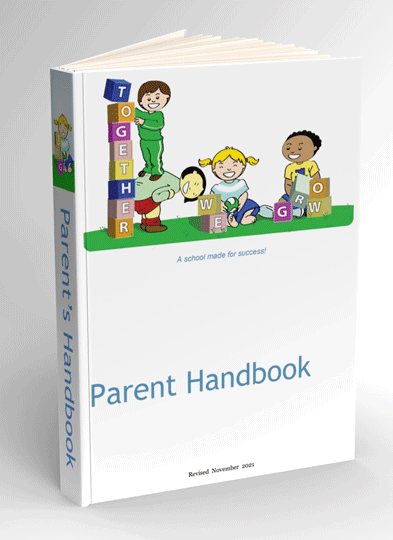 Together We Grow Learning and Childcare Centre is committed to creating a work environment that favours equality and inclusion of all its employees and clients. Priority is given to protecting our employees and our visitors from harassment and discrimination. Such conduct interferes with everyone’s ability to perform their duties and is not in keeping with the centre’s philosophy of trust and mutual respect.
Together We Grow Learning and Childcare Centre is committed to creating a work environment that favours equality and inclusion of all its employees and clients. Priority is given to protecting our employees and our visitors from harassment and discrimination. Such conduct interferes with everyone’s ability to perform their duties and is not in keeping with the centre’s philosophy of trust and mutual respect.
Our employees and children have the right to be treated with dignity and respect and have a work environment free from harassment and discrimination as described in the Human Rights Code of Ontario and the Occupational Health and Safety Act. This particular policy applies to all staff of Together We Grow Learning and Childcare Centre both in the workplace and when participating in work-related activities.
Employees are expected to assist Together We Grow Learning and Childcare Centre in its attempts to prevent and eliminate harassment in the workplace. We will treat any form harassment that occurs with great attention regardless of who the culprit is. Nothing in this policy limits an individual’s right to file a complaint with the Human Rights Commission or the Ministry of Labour should they feel the situation warrants such action.
Together We Grow Learning and Childcare Center has adopted a comprehensive strategy to address harassment and discrimination:
- Regularly monitoring organizational systems for barriers relating to code grounds
- Providing an effective and fair complaints procedure
- Promoting appropriate standards of conduct at all times
Definition
The Occupational Health and Safety Act defines workplace harassment as “engaging in a course of vexations, comments or conduct against a worker in a workplace that is known or ought reasonably to be known to be unwelcome.”
Harassment and discrimination can take the following forms including:
- Discrimination-based Harassment Includes any verbal or physical conduct, that may reasonably be perceived as denigrating or showing hostility or aversion toward an individual because of the individual’s race, colour, religion, gender, sexual orientation, national origin, age, disability, or other status protected by law, or because of the protected status of the individual’s relatives, friends, or associates. This type of harassment includes, but is not limited to:
a) Epithets, slurs, negative stereotyping, demeaning comments, including comments pertaining to a person’s dress, accent or other cultural differences, or intimidating acts that are based on an individual’s protected status; and/ or
b) Written or graphic material (whether by printed or electronic media) circulated within or posted within the workplace that shows hostility toward or is demeaning to an individual or group because of his or her protected status.
- Sexual harassment Generally there are two types of sexual harassment:
a) Repeated sexual advances or solicitations made by a person where such person knew or ought reasonably to have known that the advance was unwelcome; and/or
b) A reprisal or threat of reprisal for rejection of a sexual solicitation or advance made by a person who is in a position to grant or deny a benefit.
Examples of harassment include:
- Epithets, remarks, jokes or innuendoes related to a persons race, gender identity, gender expression, sex, disability, sexual orientation, creed, age or any other ground
- Posting or circulating offensive pictures, graffiti or materials, whether in print form or via email or other electronic means
- Singling out a person for humiliating or demeaning “teasing” or jokes because they are a member of a code-protected group
- Comments ridiculing a person because of characteristics that are related to a ground of discrimination. For example, this could include comments about a persons dress, speech or other practices that may be related to their sex, race, gender identity or creed
Sexual and gender-based harassment:
- Gender-related comments about a persons physical characteristics or mannerisms
- Paternalism based on gender which a person feels undermines his or her self-respect or position of responsibility
- Unwelcome physical contact
- Suggestive or offensive remarks or innuendoes about members of a specific gender
- Propositions of physical intimacy
- Gender-related verbal abuse, threats or taunting
- Leering or inappropriate staring
- Bragging about sexual prowess or questions or discussions about sexual activities
- Offensive jokes or comments of a sexual nature about an employee or client
- Rough and vulgar humour or language related to gender
- Display of sexually offensive pictures, graffiti or other materials including electronic means
- Demands for dates or sexual favors
Sexual Solicitation
This policy prohibits sexual solicitations or advances by any person who is in a position to grant or deny a benefit to the recipient of the solicitation or advance. This includes managers and supervisors, as well as co-workers where one person is in a position to grant or deny a benefit to the other. Reprisals for rejecting such advances or solicitations are also not allowed.
Poisoned environment
A poisoned environment is created by comments or conduct (including comments or conduct that are condoned or allowed to continue when brought to the attention of management) that create a discriminatory work environment. The comments or conduct need not be directed at a specific person, and may be from any person, regardless of position or status. A single comment or action, if sufficiently serious, may create a poisoned environment.
Responsibilities of Executive Directors, Managers and Supervisors
- Promote a harassment-free workplace;
- Provide employees with information and instruction regarding the workplace policy and program with respect to workplace harassment including appropriate steps to be taken and investigation procedures;
- Take every reasonable precaution for the protection of the worker;
- Ensure employees understand who to contact regarding concerns about the policy or when to report an incident;
- Model behaviour, which helps support a positive work environment;
- Ensure the workplace is free from harassment and discrimination;
- Respond to complaints brought to their attention;
- Respect the confidentiality and sensitivity of such issues;
- Document all information and investigation results;
- Request that an investigation into allegations of harassment be conducted where appropriate; and
- If witnessing harassment or elements of a poisoned work environment, take action.
Responsibilities of Employees
- Compliance with this policy is the responsibility of all employees;
- Employees must avoid any behaviour or conduct that could reasonably be interpreted as a violation of this policy;
- Employees must maintain a work environment free from discrimination and harassment.
Process for Making Harassment Complaints
For less serious incidents of harassment, if employees have witnessed or experienced conduct which they believe to be inconsistent with this policy, they have a responsibility to:
- Make the objection clearly known to the offender.
- Ask the individual to stop the behaviour.
- Where an employee approaches another employee with a workplace harassment complaint/ concern, s/he should clearly state that the perceived action/ behaviour is viewed as harassment under the terms of the Centre’s policy.
- In certain circumstances, it may be inappropriate or the employee may feel comfortable in asking the individual to stop. In this case, the behaviour should be directly reported to their Supervisor or the Director.
- If the behaviour continues after making the objection known, or is more serious in nature, contact your Director.
- A written record of the action/behaviour and complaint should be provided to your Supervisor or Director including the dates, times, nature of the action/ behaviour, and witnesses (if any).
Investigation Process
- All complaints will be investigated promptly.
- All those directly involved and witnesses will be spoken with.
- Notes/statements will be prepared during each interview, reviewed by the person (s) being interviewed and signed for accuracy.
- Records or other documents relevant to the incident being investigated (this may include work schedules, complaints and observation notes and may involve taking pictures of the scene) will be reviewed.
- Relevant collective agreement, employment contract language or organizational policies/procedures will be reviewed.
- Depending on the scope of the investigations, employees may need to seek the assistance of the Director.
- A final summary/ report of the investigation will be prepared.
Corrective Action
Any employee found to have engaged in conduct that violates this policy will be subject to discipline, up to and including termination of employment. Since allegations of harassment are very serious, frivolous complaints found to have been made for improper purposes will result in disciplinary action being taken against the complainant.
Employees should feel secure in knowing that their concerns will be handled discreetly and sensitively. As such, employee issues will usually remain between the employee and their Supervisor. On occasion, however, an investigation may require consulting with another employee, Supervisor, Director or the Board, in order to ensure an appropriate resolution. In such cases, the employee will be consulted prior to involving others.
Reprisals
This policy strictly prohibits reprisals against an employee because s/he has brought forward a legitimate concern or has provided information regarding a concern under this policy. Any employee who commits or threatens reprisal against another employee for following this, or any of the Centre’s policies in good faith, may be subject to discipline, up to and including dismissal for cause.

